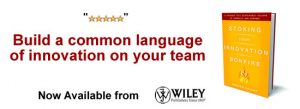How to Avoid Abandoning New Year’s Resolutions

According to some studies, 80% of New Year’s resolutions fail by February. That raises some important questions: Why do we set them in the first place? Why do we abandon them, and, of course, how can we avoid doing just that?
THE PSYCHOLOGY OF FRESH STARTS
The “Fresh Start Effect†is the term University of Pennsylvania professor Katherine Milkman uses in her 2014 study of the same name to describe the feeling we get when the New Year hits and we fire up to set aggressive goals for the coming twelve months. According to the study, people are more likely to set a new goal corresponding with or immediately following an event such as a birthday or the start of a week, month, season, or year, suggesting that temporal landmarks or timestamps might make it easier to engage in aspirational behavior.
For example, the researchers asked hundreds of participants to describe a goal they wished to achieve. After describing the goal, participants were offered a courtesy reminder several months hence as an encouragement to pursue their goal. Half the group was offered a reminder date of “March 20, the third Thursday in March,†while the other half was offered “March 20, the first day of Spring.†More people chose the latter date, which signaled the start of a new cycle.
Milkman proposes two mental processes to explain the effect. First, that these landmarks create new “mental accounting periods†that psychologically distance our present self from its past imperfections, propelling us to behave in line with their renewed self. Second, temporal landmarks interrupt attention to day-to-day details, causing us to take a big-picture view of our situation and focus more on the broader challenge we’re chasing.
The Fresh Start Effect helps explain why we set New Year’s resolutions. But as it turns out, how we set them has everything to do with whether we achieve or abandon them.
THE NEUROSCIENCE OF GOALS
Discoveries in neuroscience reveal that for a significant goal to be achieved, we need both motive and means.
“Goal-direct actions are constituted by both movement and mind,†write the authors of a study at UCLA that examined goal hierarchy. “Actions possess both a how — the executed movements of the body and its mechanical interactions with the physical world around it — and a why — the relatively disembodied motives, beliefs, and intentions of the actor.â€
The researchers used functional magnetic resonance imaging (fMRI) to scan and record the brain activity of subjects as they wore video goggles to view videos of people performing routine activities, such as browsing the Web, lifting weights, and brushing their teeth. Participants were asked both how and why people typically perform each action. For the how questions, the participants were told to think of one necessary part of performing the action; for the why questions, they were told to think of one plausible motive for performing the action.
Here’s the thing: the how and the why lit up completely different parts of the brain: how thinking engaged the left brain circuitry, while why thinking engaged right brain circuitry. The findings also suggest an inverse relation between the two circuits, meaning when one is on the other is off.
The implications are significant: goal achievement requires a how as well as a why for whole-brain engagement, and it is important to maintain a connection between both. However, trying to focus on both simultaneously may work against us.
Understanding that the why+how requirement is binary certainly helps explain why so many people fail to achieve their New Year’s goals, but it remains a conundrum that demands resolution (pardon the pun).
WHY-HOW LADDERING
Whether we lose our sense of purpose in setting a New Year’s resolution in the first place, or simply struggle with how to achieve an arduous and ambitious goal, and assuming that science is correct that simultaneously focusing on both the why and how isn’t possible, we still need a practical method to call one or the other up when we begin to stall and contemplate abandoning our big goals.
That’s where “Why-How Laddering†comes in. If the how isn’t yielding the desired progress, we can “ladder up†to asking ourselves the why. If the why isn’t as clear as it could be, we can “ladder down†to a lower level how until we find something we can accomplish to get a quick win and restart our progress toward the why.
One of my favorite examples entailing this kind of laddering concerns the turnaround of the ailing British prison system. When Sir David Ramsbotham retired from the esteemed position of Adjutant General of the British Army in 1993 and was appointed Her Majesty’s Chief Inspector of Prisons for England and Wales, he inherited a system in a tailspin. Since Sir David’s latitude to effect change was limited to inspection, he couldn’t very well go in and tell the heads of prisons to change their ways. Instead, he had to make things happen by changing things within his domain of control…inspection. He chose to focus on the goal of the British prison system, and the measure of success against which prisons were inspected.
As you would expect, the why of the prison system at the time was to prevent escape, and the logical measure of success was the number of escapees. But as he began to think about the problem, he concluded that the main why of a prison system should not be keeping prisoners off the streets, but rather to make sure they didn’t come back once released. In other words, the new why was eliminating recidivism.
The new why meant a new metric: number of repeat offenders. The winning aspiration? 0% recidivism rate. The new why and corresponding constraint effectively turned the prison system upside down. Sir David challenged the management teams of each prison to significantly shift their focus and to devote their energies toward figuring out new hows: processes and programs specifically designed to rehabilitate the prisoners while they were incarcerated, and better ways to ease them back into society once they were released.
So when February (or April) looms ahead of you and your Fresh Start enthusiasm begins to wane, first figure out whether the cause is related to your why or your how. It may be both, and if it is, you might want to take a page from Sir David and tackle the why first, if for no other reason than the old cliche: where there’s a will, there’s a way.
Wait! Before you go…
Choose how you want the latest innovation content delivered to you:
- Daily — RSS Feed — Email — Twitter — Facebook — Linkedin Today
- Weekly — Email Newsletter — Free Magazine — Linkedin Group
 Matthew E. May is the author, most recently, of Winning the Brain Game: Fixing the 7 Fatal Flaws of Thinking.
Matthew E. May is the author, most recently, of Winning the Brain Game: Fixing the 7 Fatal Flaws of Thinking.
NEVER MISS ANOTHER NEWSLETTER!
LATEST BLOGS
The Evil Downside of Gift Cards
This past holiday season I saw probably one too many articles trumpeting the value of gift cards to retailers and how they are a great thing for retailers. My skeptic side starts coming out as I see article after article appear, and I have to start asking “Is the increasing prevalence of gift cards as a holiday gift (primarily Christmas) a good thing for retailers?”
Read MoreWhy the iPhone will not succeed – Yet
The new Apple iPhone is set to launch on June 29, 2007 and the press and investors are making it a darling. Investors have run Apple’s stock price up from about $85 per share before its announcement to $125 per share recently, but the iPhone still will not succeed – at least not yet.
Read More



